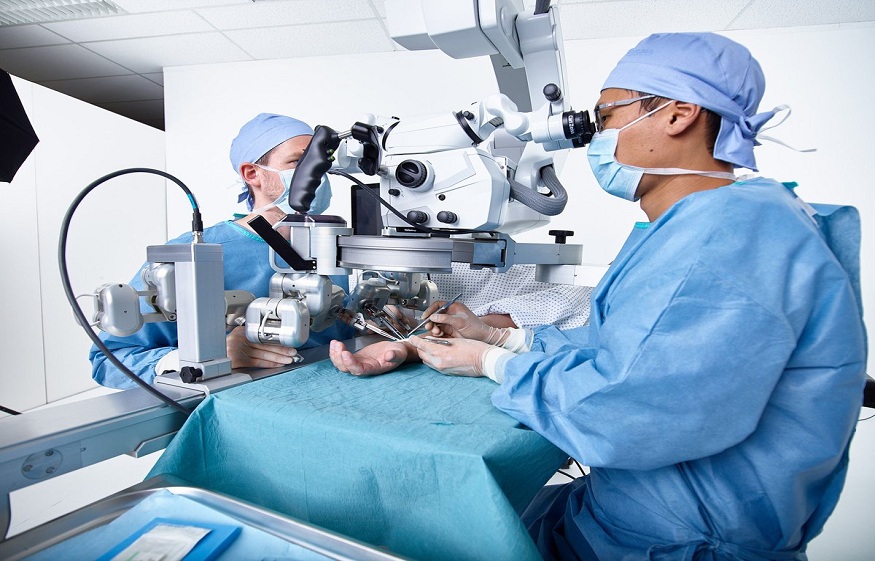Anaesthesia uses any agent to prevent pain and cause loss of sensation during surgery and other procedures.
These are usually provided by injection from an anesthesiologist, a physician specialising in perioperative care.
Vinicio Lluberes, director of the Department of Anesthesia at the Centers for Diagnosis and Advanced Medicine and Medical Conferences and Telemedicine (Credit), affirms that this process goes beyond putting the patient to sleep, as many people tend to think since it has a protagonist in the perioperative period.
Types of anaesthesia
The doctor points out that the first thing to consider is numerous anaesthesia techniques. These can be categorised into three types, sedation, general anaesthesia and regional. He points out that none is better than another since each one has its uses depending on what the patient needs.
In general anaesthesia, the person is put to sleep entirely, and when the procedure is finished, the effect is reversed. She is then taken to the post-anaesthesia area, where she is closely observed by the anesthesiologist.
This type is used for primary operations, such as brain surgery, back surgery and organ transplants, among others.
Also, regional anaesthesia, which is one of the most commonly used in our environment in the Dominican Republic, is possible that the person is awake in the middle of the surgery.
It is used for large areas, such as a C-section, a shoulder, and a knee. However, there is a false belief that this is less risky than the general one; The doctor states that this is not the case and that everything depends on particular factors of the patient who will be in the operating room.
Preoperative consultation
“The process that involves anaesthesia begins in a preoperative consultation that the person must attend, in which a complete review is done, both of physical aspects, such as the airways, the presence or not of dental prostheses; A general review of the laboratories is also carried out,” describes Lluberes.
He adds that in that visit, a series of instructions are given to the patient that he must consider before undergoing the procedure. “One of the most important is about food intake, recommending fasting from solids for at least 8 hours before surgery, while for liquids, it can be less, from four to six,” says the doctor.
Importance of fasting
The doctor emphasises that it is essential to respect the fasting instruction due to the complexity that could lead to its violation.
He explains that during the induction of anaesthesia, apart from the medicine used to put the patient to sleep, one is used to relax the muscles, affecting the gastroesophageal sphincter. Suppose food has been eaten at the indicated times, this vomit, bronchoaspire and can cause breathing pneumonia. Lluberes points out that stomach fluid is highly acidic, and the lungs don’t like it; therefore, pneumonia or aspiration pneumonitis is very dangerous.
The specialist adds that once the patient enters the operating room, the anesthesiologist has an active role, in which he is responsible for observing five fundamental parameters such as blood pressure, heart rate, saturation, temperature and carbon dioxide.
He adds that after the surgery, the anesthesiologist proceeds to wake up the person, which is where the most excellent skill of this doctor is needed since they should not feel any pain, nausea, or vomiting, which are practically the most common effects of this process.
It is one of the most significant advances.
It is one of the most significant advances in medicine, and it has multiple benefits for the patient because it reduces sensory capacity, thus avoiding pain during the procedure.
For the surgeon because he can focus on the operation without having to deal with the pain that the same process can cause to the patient.
However, this can also cause an allergy since the patient can trigger it, but these are sporadic cases and can be managed.
Post functional headache
— Recommendation
The anesthesiologist recommends that patients who suffer post-functional headaches after anaesthesia take an analgesic, ingest caffeine and maintain adequate rest.
Vital signs are monitored in the post-anaesthesia area
Attention. The doctor maintains that during the time that the person is in the post-anaesthesia area, the specialist has to monitor the vital signs of the patient. In the case of an outpatient process, it is about using the least amount of medication possible.
“Once the patient has been taken to that area, we have three or four goals, among these, that
- they have no pain
- they can eat food
- they can go to the bathroom without trauma and make sure that they have someone to help them at home during the procedure. Recovery process”, says the doctor.
It is essential to have control in this area.
You may also like
-
Exploring Leading Fertility Hospitals And Ivf Clinics In Jaipur
-
Swift Healing at Your Fingertips: Balanitis Treatment Online
-
Understanding Laboratory Diagnostic Tests: Procedures and Importance
-
Understanding Medical Termination of Pregnancy: A Comprehensive Guide
-
Important Role of Omega 3 Fatty Acids & Carbon Monoxide

